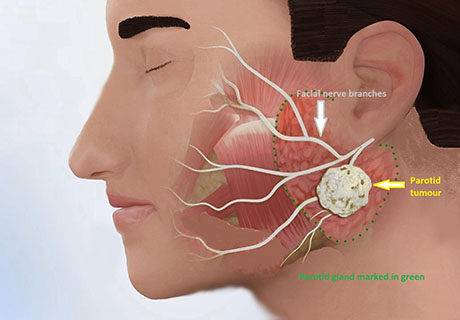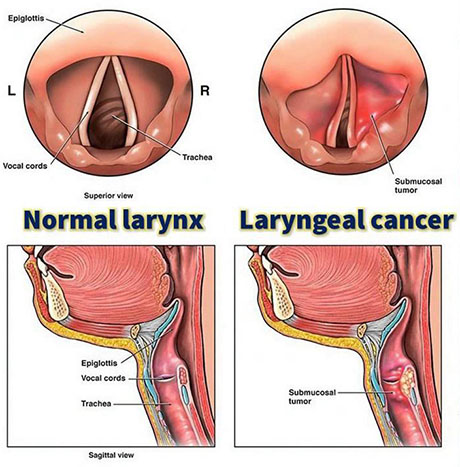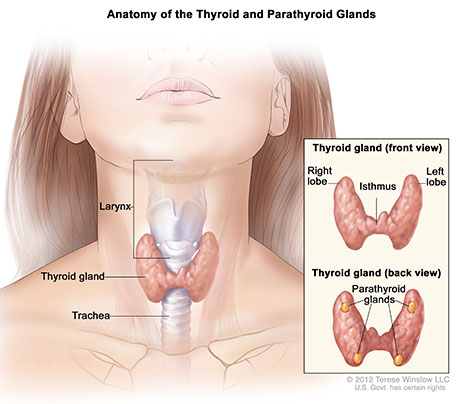Salivary Gland Cancer
Tumours can involve the major salivary glands, particularly the Parotid glands, which are situated just in front of the ear on the side of the face. Such tumours are uncommon (the majority of parotid tumours are benign) and rarely effect children. They are often discovered by accident, as this type of tumour shows no visible symptoms. However signs of malignancy include a lump or growth on the gland, paralysis of the face and changes in skin colour.
TreatmentBenign lumps are usually removed, as over time they do increase in size and may become more difficult to remove. Malignant tumours are removed and, in some cases , a course of post-operative radiotherapy may be recommended. Radiotherapy is the use of high energy radiation, usually in the form of X-rays, to kill cancerous cells.


Laryngeal Cancer
Malignant tumour or lumps on the voice box (Larynx) frequently occur in middle aged people, who have a history of smoking and drinking alcohol. Lesions develop on the vocal cords (Glottis) and the upper part of the larynx, which is located above the vocal cords (Supraglottis). Cancerous cells grow from flat cells that are located on the surface of the throat / larynx (Squamous Cell Carcinoma). This is the most common type of malignant growth in the head and neck.
TreatmentRadiotherapy is used to kill small malignant tumours in the voice box (Larynx) in many cases although some surgeons are advising the use of the laser to remove small tumours, there is still some debate regarding this form of treatment. If radiotherapy is unsuccessful or the cancer is recurrent, then surgery is recommended to remove some or all for the voice box (Partial or Total Laryngectomy). Many patients undergoing laryngectomy will retain voice , either through developing oesophageal speech or the use of a small ‘valve' that is placed at the time of surgery.
Cancer of the Mouth (Oral Cavity)
Malignant growths from the thin flat cells that line the structures in the mouth (Squamous Cell Carcinoma) are the cause of all oral cancers. Oral cancer is widespread amongst smokers, people with high alcohol consumption and in patients with chronic dental infection.
TreatmentSurgical removal or radiotherapy, or sometimes a combination of these in more advanced tumours may be the initial treatment. If radiotherapy is the initial treatment and is unsuccessful, then surgery may be used to deal with the problem.


Cancer of the Thyroid Glands
The thyroid gland is located in the front of the neck just below, and either side of, the voice box (larynx). This gland produces hormones that help regulate our metabolism. These tumours usually present as an isolated lump in the neck. Thyroid cancer is more common in women.
TreatmentSurgery would normally be the primary treatment of this condition although radiotherapy may have a part to play in some cases. Drugs which affect the activity of the thyroid gland are also sometimes used in their treatment.
Cancer of the Nose and Paranasal Sinuses
Cancers of the nose and sinus are extremely rare. Symptoms arising from these tumours include nasal obstruction, bleeding from the nose, pain, and occasionally eye symptoms such as double vision , watering eye etc.
TreatmentSurgery is used to remove tumours in the nose (Nasal Cavity). Post-operative radiotherapy may be recommended if the tumours are more extensive. A combination of Radiotherapy and Chemotherapy is used to treat malignant tumours in the area at the back of the nose (Postnasal Space).
By C. Milford, Radcliffe Infirmary, Oxford and S. Anuku
Disclaimer
The details in this section are for general information only. Always check with your own doctor.
